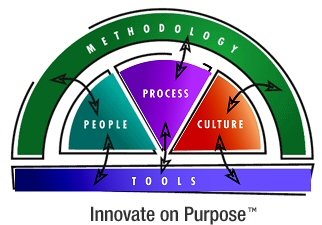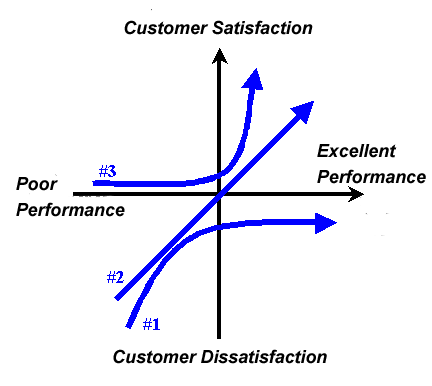Chapter 7
An Influence over Capital?
Channels of communication
have now become wide-open
enabling an individual to
become many with a
connected voice. Individuals
are now becoming the media,
and their influence grows daily
threatening the historical
institutions who are losing
control.
The capital, which historically
followed the influence of
institutional communications
and media, will also begin to
shift due to the influence of
the individuals. The individuals are creating a new institution founded not only on the freedom of speech but also on the power of speech when united with other individuals, one-to-one to millions. The question remains whether capital will shift as people, markets, and businesses shift.
The Freedom or Power of Speech?
Markets create and influence capital distribution. Capital followed the markets of the past, which were created and influenced by the few, and capital followed the markets.
Markets have been and will always be fueled by conversations.
Historically, media
fueled the
conversations whether
it was print or
broadcast via
television, radio or the
web.
Today the individual is
creating the media
using web 2.0
technologies to create
conversational rivers
via broadcast tools such as blogs, wiki’s, self produced video, podcast and distributing their media all over the web, one-to-one to millions.
Social networks have advanced the cause of distribution enabling people to
“connect” to other people and distribute media. The institutions of the past can no longer control communications, media and the subsequent capital that follows.
Does Capital Follow Market Conversations?
A market is fueled by the consumption of products and services. Mass consumption is, in turn, fueled by the satisfaction of the consumer.
Historically, satisfaction indexes were measured over time and published by the media. Now satisfaction is both determined and influenced by the conversational rivers of the web and published by the individuals, one-to-one to millions, for immediate consumption. Consumer satisfaction indexes are being produced in web time, which is now rather than over certain periods of time.
Satisfaction is an influence over markets. Without satisfying a need, both instantly and over time, markets deteriorate and are replaced by new markets. Capital follows those that are able to satisfy markets. New markets are driven by replacing old or creating new methods of communicating and the creation, distribution and influence of media.
Those who wonder how all this social activity can or will create any revenue just might be focusing on the cart before the horse. A horse can pull a cart to a destination. A cart is driven by an individual. An experienced individual in a good cart and a strong horse can win the race. The economic gains are the results of winning the race for satisfaction.
Maybe the race is about the pace in which the divisions between people, markets and capital are coming down. Maybe the prize is left to those who discover new ways to break down old divisions and create new markets that satisfy consumers. Has the definition of satisfaction changed? Is the perception of satisfaction now largely driven by conversations? Market Socialutions are created and satisfied through conversations.

How Good Is the Promise?
Businesses seek competitive advantage.
The methods used to gain competitive
advantage vary by industry but the
fundamental objectives are the same,
creating and delivering more value than
expected.
Delivering more value than expected is
a race driven by creativity, innovation
and speed. The race never ends the
expectation for value increases with
every turn, and the expected speed of
delivery is now, not tomorrow.
Not delivering now with more value
than expected is a disappointment to
people that experience your product,
service or work environment. People,
whether labeled customers or
employees, expect value to be delivered
as promised, on time and the
experience should match or exceed the
promises.
Three things happen from experiences people have with your company:
1. Not delivering as expected creates a bad experience that will be shared.
2. Delivering as promised creates an expected experience not worthy of sharing.
3. Delivering beyond the expected creates an experience worth sharing.
The next time you are in the break room at work, just listen to the conversations. The next time you are at an industry conference just listen to the conversations. The next time you ask for customer feedback, listen. The next time you log onto the web, go where the conversations are and just listen. What are the experiences being shared?
Conversations about your company, your products and services, your employee’s satisfaction and your market’s wishes are everywhere and engaging everyone. Is your business engaged? If not, you are disconnected.

How Can You Change The Conversations?
As business leaders begin to recognize the power of the social web, they try different tactics to change the conversations to their advantage. These include:
1. Attempting to change the conversations with public relations campaign 2. Ignoring the conversations expecting them to simply go away 3. Creating new conversations about new promises 4. Engaging in the conversations and learning what needs to change.
Then significantly improving those things better than expected--
immediately
Which tactic is likely to produce the best Socialutions? Just remember that whatever tactic you choose it will create another experience. Determine which of the three things likely to happen from any new experience people have with your company would bring the most value.
There is a new marketplace driven by conversations. Be careful with not only what you do but also how you do it. The people are listening regardless of whether you are or not. What you say or do and do not say or do is considered a promise. Your shareholders expect you to deliver or exceed on your promises!
Breaking a promise, you lose. Keeping a promise, you draw.
Exceeding promises enables you to win, every time. Allow people the value of winning and you win.
Does Business Need Innovation?
The Relationship Economy is
driven by the production,
distribution and use of
knowledge between people. The
more open a business culture is
and the more advanced a
business is in adopting
Socialutions, the more creativity
and innovation flow.
The more people connect, the
more information flows when all
participants are free to learn
and grow. The more a business leverages social technologies the more enabled the people become to learn creative and innovative ways to serve markets, customers and each other.
The relationship driven economy brings new challenges for business. Markets are becoming transparent and the customer is becoming more vocal. These emerging dynamics are forcing traditional business to adapt and learn Socialutions that satisfy all stakeholders. For some businesses, the learning curve is fast while others are not even remotely aware that the world has and will continue to change.
What Actions Are Needed?
Scott Anthony’s article in Harvard Business Review Titled: Innovation Advice from Procter & Gamble CEO A.G. Lafley. States, “This morning I did the “Q” part of a 75-minute Q&A session with P&G CEO A.G. Lafley. The discussion was wide ranging, covering everything from the need to re-think marketing and advertising to the benefits of a liberal arts education. At the end of the session, I told the audience that my six takeaways were: 1. In an age of disruption, growth is getting increasingly difficult.
2. Companies need to take the long view. Lafley said he finds it hard to watch CNBC for more than 7 minutes because the focus is so short term.
3. The customer needs to be the center of the innovation equation. When Lafley took over as CEO in 2000, he said he saw too many managers on their cell phones, or buried in spreadsheets, in essence “showing customers their behind.”
4. Experimentation is key. Lafley talked about the value of giving customers even crude prototypes to test an idea. He also described how different parts of his organization approach innovation differently, and that is a good thing.
5. Complex organizations need to simplify to innovate successfully. Lafley said he seeks Sesame Street simplicity.
6. The CEO has to be the “Chief External Officer” to manage external pressure and the “Chief Innovation Officer” to push the innovation agenda forward.”
We would add a seventh takeaway here, which is the important role of building an innovation portfolio. Lafley said that he expects his business units to have somewhere between 10 to 30 percent of their innovation portfolio focused on disruptive innovation.
Mr. Anthony and Mr. Lafley are pointing to the very precepts of Socialutions.
While the talking points are clear, the process of adaptation and transformation are not. The answer to adaptation starts with changing the mindset of Leaders. The transformation process is about leveraging social technology to accelerate exchanges of information, knowledge and solutions between people faster than ever before.

Socialutions is not a thing or a process. Rather, it is a mindset that needs to permeate throughout an entire organization, an entire industry and then to entire markets.
How Fast Can You Get to Free?
The faster a business can get its products or services to a price of “zero,” the more money they are likely to make in The Relationship Economy. This perspective is emerging as the new Socialutions theory driven by the current digital economy.
The digital economy is driven by the
dynamics of free technologies that are and
will continue to disrupt traditional
processes that support or create
commerce.
The Socialutions that create the greatest
value for a business are the processes
centric to maximizing consumer and
business value by reducing waste and
providing more time and value for free.
Social technologies that flatten production, distribution, and communications are the
driving forces to “freeing up time” by eliminating historical waste.
Waste surrounds us everywhere and is a
by-product of past management models
designed around old command and control mindsets. Control is based on an assumption of scarcity of knowledge and trust. Command is an old model based on the psychology of power contained by the few that assumes more power can be gained through command and control.
Is It a Change in Assumptions?
Chris Anderson of Wired Magazine writes: “It took decades to shake off the assumption that computing was supposed to be rationed for the few, and we’re only now starting to liberate bandwidth and storage from the same poverty of imagination. But a generation raised on the free Web is coming of age, and they will find entirely new ways to embrace waste, transforming the world in the process. Because free is what you want — and free, increasingly, is what you’re going to get.”
To assume that “free” will not last as a business model is like saying your business does not need customers to survive. The free model introduces a set of new assumptions including:

1. The cost of production will continue to decrease.
2. The cost of distribution will continue to decrease.
3. The cost of communications will continue to decrease.
4. Marketing and Public Relations is a by-product of communications with new rules for creating attention.
5. The cost of labor will go down while the scale of output will go up.
Maximization of resources, technology, knowledge and relationships will be the four primary elements required to make money from “free.” By maximizing these four elements, you create new value centric to people’s needs and wants. It is this new value created that enables businesses to make money from the free because the free begets the attention to the value, for which people will gladly pay. Not only will they pay for the value, but they will tell everyone how much value they also received from the free.
If you are a skeptic, stand aside and watch other businesses that not only believe it but also are living it to the benefit of their shareholders. Have you checked Google’s stock price lately?
Ready, Fire, Aim?
When traditional mindsets buy or use new
technology, they often try to make the dynamics of the technology fit with the objectives
represented by the urgency of the moment.
The difference in applying social technologies to existing business operations is not necessarily changing what you do, i.e. communicate with
stakeholders, create new value propositions etc., rather it is more about changing how you
do things.
Chris Bailey writes, “Most organizations will simply try to lay the latest business fad on top of their current operations and culture.
Regardless of whether they implement this innovation with the best of intentions or not, they’ll soon discover that this course of action will lead to failure with a high probability rate.”
“Let’s take social media as a fresh example. Loads of businesses and non-profits are adding social media tools to their everyday work as a way to keep up with progress (or worse, to demonstrate they’re “hip” and “edgy”).
They’re creating corporate blogs, podcasts, and vblogs; engaging in communication channels like Twitter; building collaborative pages via wikis and Facebook. I’m not suggesting that there’s anything inherently wrong with any of these activities, but I do argue that simply adding them to your business operations without understanding will expose your organization as a hipster wannabe and leave you thinking that this social media stuff doesn’t work after all.”
What Is The Cost of Failure?
The irony of the social media space is that doing the wrong things and doing things wrong is immediately transparent to the world, your customers, your employees and your entire market. Launching any number of social initiatives can be a risky proposition if the intent is not well defined and integrated into the organizations overall strategy, both for the short and long-term.
In fact, launching a social media initiative can make a bad situation worse or take a good situation and turn it bad very quickly. Any social media initiative ultimately touches all elements of a business in which people interact, in other words, everything.
While technology plays a role within any social media initiative, it is the least important role. The most important Socialution is “how” any initiative will be perceived as either taking away or adding value to people. For instance, a few examples of pertinent questions would be: 1. Does the initiative help people resolve problems or does it just mask problems?
2. Is the initiative tied directly to improving peoples experience with your business operations?
3. Have all the stakeholders (employees, customers, markets, etc.) been made aware of and understand the purpose of a social media initiative?
4. What are the key metrics of measurement for measuring the impact of any initiative?
5. Are social media initiatives aligned with other initiatives and tactic that aim at a common strategic purpose?
While tactically speaking, much of any social initiative requires a ready, fire, aim. However, the strategic approach needs to be anchored in a more logical ready, aim, fire approach that is systemically tied to the overall objectives of the organization. Otherwise, failure can cost a lot more than the cost of any social media initiative. Word of mouth spreads fast throughout the social web
- so do social failures.

Does Revenue Come from Free?
Many people get perplexed as to
“how” free can produce revenue.
Traditional mindsets view the social
web as a “mesh” of communications
in which the only revenue model is
advertising.
With the old web based advertising
models now proving ineffective, the
media is quick to suggest that all
this “social networking” is coming to
a fork in the road. Those who quickly
learn and capitalize on turning free
into revenue, besides ad revenue,
win and the others lose.
What is Not Free?
With all the free access to social media, social tools and people to connect with, we have become accustomed to “free” and expect it. As soon as a platform tries to institute subscriptions, we reject it because similar functions and features are available elsewhere for free.
Even knowledge is free. There is an abundance of “free” knowledge about anything and everything. Social tools aimed at helping people and organizations find relevant information and new knowledge surround us. With the explosion of advanced “social technologies,” the price of this knowledge is the learning curve that takes time and attention--two things that are scarce for everyone.
While the access to the knowledge is free, the acquisition of knowledge costs time. The acquisition of knowledge means the confident understanding of a subject with the ability to use it for a specific purpose. The specific purpose being sought by everyone is “how” to turn free into revenue.
Are The Answers to “How” Free?
Those things that are scarce in the “free” market are those things that represent the greatest value. You can charge for value or earn revenue by enabling others to earn revenue from free.
Google earns in excess of $4 Billion a year providing free technology that enables others to create revenue. Google’s earning come from the power and value of enabling others to generate revenue. Ninety-nine percent of what Google offers the market is free while one percent of their offerings is aimed at enabling people and organizations to generate revenue.
Just having the knowledge of “how” free works does not mean an individual or organizations knows “how to use the knowledge” for their benefit. The difference between gaining knowledge and using it is the answers to “how.” For business, the Socialutions path to revenue lies in the answers to
“how” to use “free.” As an example:
1. How to increase customer satisfaction
2. How to create market differential
3. How to lower operating cost
4. How to increase sales
5. How to create new markets
6. How to be “social”
7. Identifying what free value would create the most revenue The list can continue representing normal questions business leaders usually ask themselves regularly. However, the system of creating value has changed and the path to revenue lies in two new dynamics. The knowledge of “how” is the value that seems to be scarce. The dynamics are “Free and Social, ” but the business mindsets are locked on revenue and anti-social processes while they pursue the chase for revenue. Time to set your mind
“free,” learn to be social, and produce revenue from free.
References
Anderson, Chris. (2008, February 25). Free! Why $0.00 Is the Future of Business. Retrieved May 28, 2008, from
http://www.wired.com/techbiz/it/magazine/16-03/ff_free?currentPage=all Anthony, Scott. (2008, May 21). Innovation Advice from Procter & Gamble CEO A.G. Lafley. Retrieved June 2, 2008, from http://discussionleader.hbsp.com/anthony/2008/05/reflections_on_front_end _of_in.html
Bailey, Chris. (2008, May 27). Socialutions And The Social Media Pretenders.
Retrieved May 28, 2008, from
http://www.baileyworkplay.com/2008/05/socialutions-and-the-social-media-pretenders/
Conversations Image. Retrieved May 25, 2008, from http://www.businessinnovationfactory.com/weblog/archives/2007/05/is_your _company_1.html
Customer Satisfaction Graph. Retrieved June 3, 2008, from http://www.pacepilot.com/images/kano5.gif
Innovate on Purpose Image. Retrieved June 2, 2008, from http://www.ovoinnovation.com/images/img_methodology.jpg Personnel Today Image. Retrieved June 3, 2008, from http://www.personneltoday.com/assets/getAsset.aspx?ItemID=4647
Ready Image. Retrieved May 28, 2008, from
http://drewmclellan.typepad.com/photos/uncategorized/2007/11/18/money mouth.jpg










